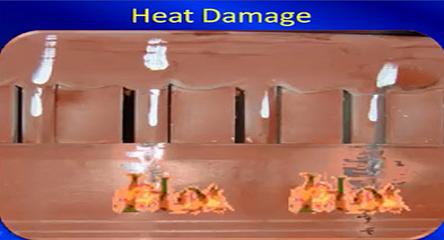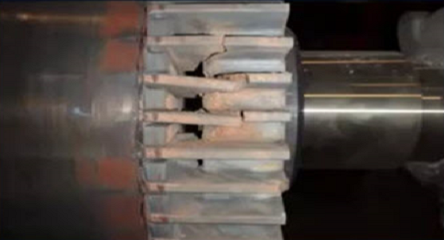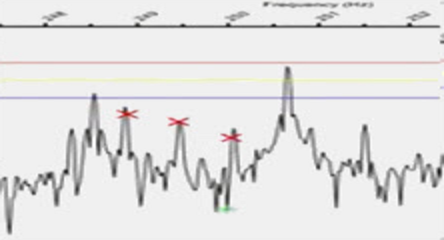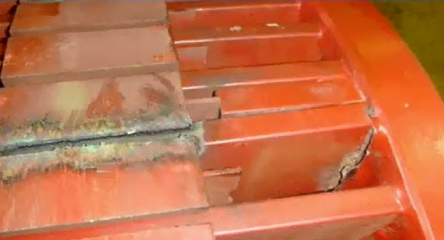What Is a Motor Winding Resistance Test?
Testing windings on a 3 phase motor is very easy with Motor Circuit Analysis™ (MCA™). Winding resistance measurements detect various faults in motors, generators, and transformers: shorted & open turns, loose connections, and broken conductors & resistive connections problems. These issues may be the cause of wear or other defects in a wound rotor motor. Winding resistance measurements detect problems in motors that other tests may not find. Instruments such as megohmmeters and ohmmeters will detect direct ground faults but will not indicate if the insulation is failing, turn to turn faults, phase unbalance, rotor issues, etc. If the motor is grounded, the megohmmeter & ohmmeter will solve your issue when you ohm a motor but if the motor problem is not a ground issue, you are going to need to use another tool or instrument to troubleshoot the problem since the motor maybe still operational but having issues such as tripping the VFD or circuit breaker, overheating, or underperforming, etc.
Motor Circuit Analysis™ (MCA™) is a test method that determines the true state of health of 3 phase & single-phase electrical motors. MCA™ checks the motors coils, rotor, connections, and more. MCA™ can verify ac motor winding resistance as well as dc motor resistance and determine state of health.
Motor Winding Resistance Unbalance or Connection Issues
MCA™ instruments give you results on screen and the test takes less than 3 minutes to perform and does not require additional interpretation and or calculations. The motor health is determined quickly with high accuracy and ease. All components of the single and three-phase motors are evaluated to determine the health of the complete motor.
Connection issues create current unbalances between the phases in a three-phase motor, which causes excess heating and premature insulation failure. Resistance unbalance indicates connection issues that can be caused by loose connections, corrosion, or other buildups on the motor terminals. High Resistance connections can also occur which can cause excessive heat at the connection point that could lead to a fire damaging equipment and causing a safety hazard. A second test at the motor leads is required to pinpoint the issue if the initial test was performed at the motor control center (MCC). This direct test at the motor leads will confirm the motor state of health and will either condemn the motor or determine the associated cabling as the root issue. Many healthy motors are rewound and put back into operation only to have the same preliminary issue unresolved.
MCA™ testing technology gives in-depth information about the state of the motor’s components, including the insulation and windings. Plus, it works with single-phase and three-phase motors and AC and DC testing.
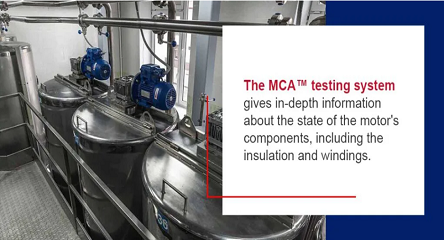
Testing AC Motor Windings
The AT34™ & AT7™ instrument’s on-screen instructions guide you through the process. The measurements are automatic, and the test leads do not have to be moved once connected. This means that you can check single phase motors and three phase motors accurately and without additional steps to perform the test. Software suites (single user to enterprise suites are available) that are easy to use enabling you to tend, track and share information on all your motor assets and additional equipment.
Testing DC Motor Windings
DC motors can have windings arranged in series, shunt or compound configurations.
When testing a DC motor with a standard ohm meter multiple tests are generally required to ensure accurate and consistent results. The technician is required to compare the values from the test to those published by the motor’s manufacturer to determine if a problem exists. By using MCA™ technology, testing the windings does not require knowledge about the motor’s specific published values or extensive electrical information. In fact, MCA™ products allow for entry-level technicians to get accurate, clear results in three minutes that do not require any interpretation. The DC motor winding testing procedure is the same as the AC motor testing procedure. The recommended method is to take a baseline test of a new or freshly rebuilt motor. Once the motor is reinstalled the baseline test can be trended with future tests to determine a change in the motor system which will eventually develop into a motor fault.


